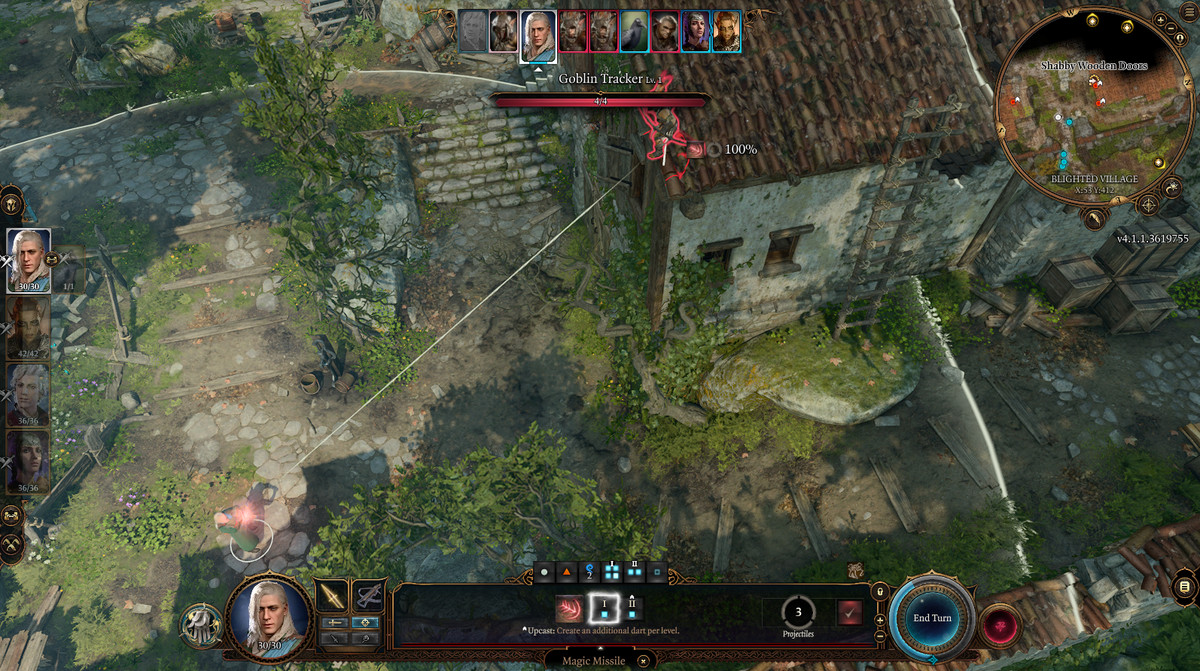Like previous Baldur’s Gate games, Baldur’s Gate 3 features a dice system. Alongside dice rolls for Persuasion or Intimidation checks, these rolls will also be used for all combat encounters in Baldur’s Gate 3. And the whole system is affected by an optional setting called Karmic Dice.
Karmic Dice can be confusing, as Larian Studios has only provided a single line of in-game text explaining the feature. (“Karmic Dice avoid failure or success streaks, while keeping the results mostly random.”) Our Baldur’s Gate 3 guide breaks down how Karmic Dice work, and if you should have it enabled at all.
What is Karmic Dice in Baldur’s Gate 3
Karmic Dice is a feature used to help balance out “good” and “bad” dice rolls. “Good” dice rolls are determined by a check passing, an attack hitting, or even getting a critical hit, whereas “bad” dice rolls are the inverse. Having this option enabled means that the game will attempt to balance out the “good” and “bad” dice rolls to make it more even, which means that if you continue to fail rolls — be it in combat or just Perception checks and the like — the odds will eventually shift in your favor. Karmic Dice is automatically checked on.

To turn off Karmic Dice, you need to navigate to your systems menu and go to the “User Options” section. There, you can disable or enable this option.
Should you use Karmic Dice in Baldur’s Gate 3?
Based on personal experience, it’s best to have Karmic Dice turned off in Baldur’s Gate 3. Karmic Dice increases the damage you receive from enemies and increase the hit chance for everyone, which can mean a full party wipe in some cases. In early 2023, Reddit user axdavidxy crunched the numbers on more than 1,300 rolls, ultimately calculating that you can receive up to 400% more damage when Karmic Dice is activated. Ouch! (akdavidxy’s research was conducted during Baldur Gate 3’s early access period.)
You’re better off save-scumming (i.e., reloading the game after a failed Perception check, or if a conversation didn’t pan out the way you wanted) as opposed to casting your luck with a roll of the dice.

However, if you are entirely new to the experience of Baldur’s Gate 3 — or with extremely TTRPG-inspired systems in games, in general — you may want to leave Karmic Dice on. While it has the chance to increase the damage you receive, the system sometimes becomes predictable, which can make combat boring or even a chore if you’re sitting around waiting for the “right” roll to fall into your lap.
That said, I felt like my experience with Baldur’s Gate 3 was better without Karmic Dice. This could be because of my familiarity with the game, having played it throughout its lengthy early access period, or having been deeply entrenched in the previous games when they were released in the late ‘90s/early ‘00s. Either way, having the option on or off felt negligible. I kept it off. For the most part, you’ll want to rely on your proficiencies to really carry through when it matters.
- SEO Powered Content & PR Distribution. Get Amplified Today.
- PlatoData.Network Vertical Generative Ai. Empower Yourself. Access Here.
- PlatoAiStream. Web3 Intelligence. Knowledge Amplified. Access Here.
- PlatoESG. Automotive / EVs, Carbon, CleanTech, Energy, Environment, Solar, Waste Management. Access Here.
- BlockOffsets. Modernizing Environmental Offset Ownership. Access Here.
- Source: https://www.polygon.com/baldurs-gate-3-guides/23818568/karmic-dice-setting-on-off
- 1
- 2023
- a
- access
- affected
- after
- All
- alongside
- also
- an
- and
- ARE
- around
- as
- At
- automatically
- avoid
- balance
- baldur’s gate 3
- BE
- because
- becomes
- been
- BEST
- Better
- by
- called
- CAN
- carry
- cases
- casting
- chance
- checked
- Checks
- combat
- conducted
- confusing
- continue
- Conversation
- could
- critical
- damage
- DICE
- down
- During
- e
- Early
- early access
- either
- enable
- enabled
- entirely
- even
- eventually
- everyone
- experience
- explaining
- extremely
- Fail
- Failed
- Failure
- fall
- familiarity
- favor
- Feature
- For
- from
- full
- game
- Games
- Gaming
- General
- getting
- go
- guide
- has
- Have
- having
- help
- HIT
- hitting
- How
- HTTPS
- i
- if
- in
- in-game
- Increase
- increases
- into
- Is
- IT
- ITS
- just
- keeping
- kept
- Larian Studios
- late
- leave
- like
- Line
- Luck
- make
- Matters
- May
- mean
- means
- more
- most
- mostly
- my
- navigate
- need
- New
- Odds
- of
- off
- on
- only
- Option
- Options
- or
- our
- out
- PAN
- part
- Party
- passing
- perception
- period
- personal
- plato
- plato data intelligence
- platodata
- platogaming
- played
- Polygon
- predictable
- previous
- provided
- really
- receive
- released
- rely
- research
- Results
- Roll
- rolls
- Said
- section
- setting
- shift
- should
- shows
- single
- Sitting
- some
- streaks
- success
- system
- Systems
- text
- than
- that
- The
- the dice
- The Game
- there
- These
- they
- this
- Through
- Throughout
- to
- To Leave
- turned
- ultimately
- up
- use
- used
- User
- via
- waiting
- want
- wanted
- was
- way
- were
- What
- What is
- when
- whereas
- while
- whole
- will
- wipe
- with
- without
- Work
- you
- your
- zephyrnet












